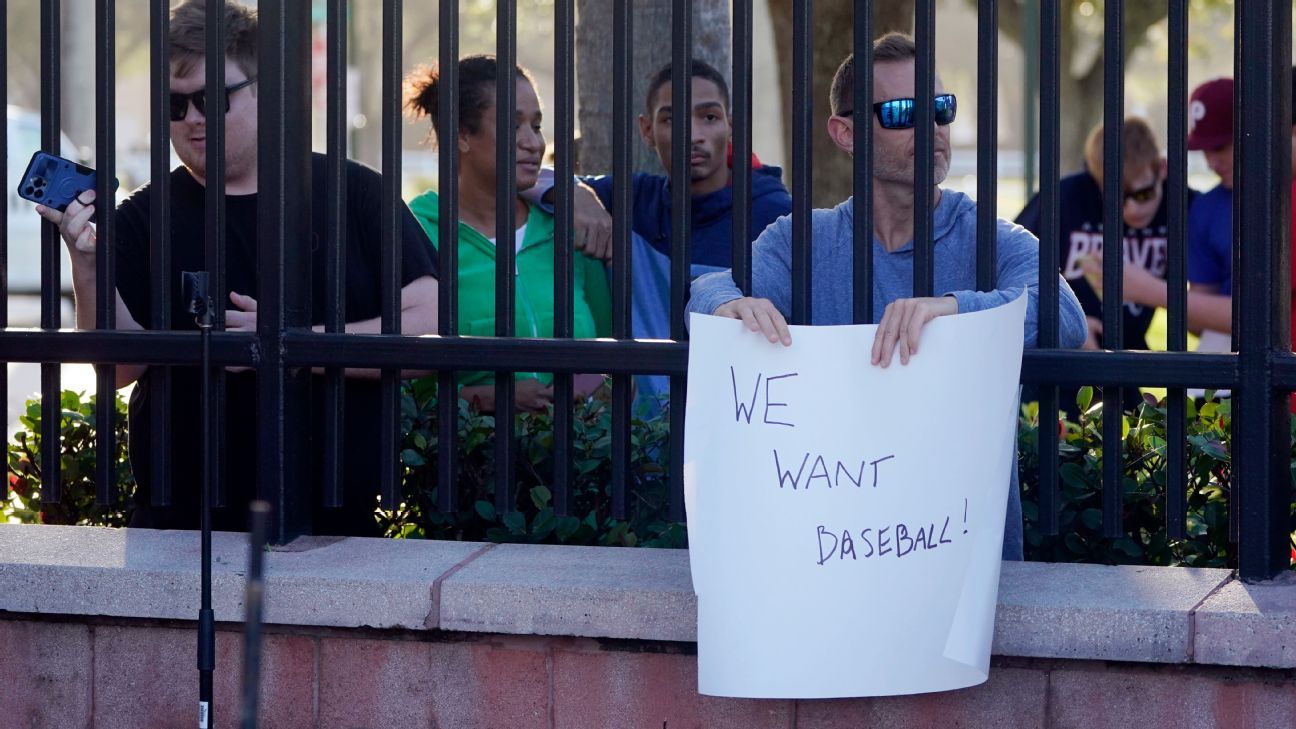There will be no MLB games until at least April 14.
After talks between Major League Baseball and the MLBPA broke down on Wednesday, the league canceled the second week of the 2022 regular season.
How far apart are the two sides in negotiating a new collective bargaining agreement? How concerned should fans be about the short-term – and long-term future of the sport?
Here are the five biggest questions as the MLB lockout continues.
The soonest the season can start is now April 14th. How likely is it that we’ll see baseball on April 15 — the 75th anniversary of Jackie Robinson’s MLB debut?
The good news is there has been significant progress made, particularly on many of the core economic issues that were once miles apart. At this point, most of the season can be salvaged, so it’s not at all impossible to be playing regular-season baseball on April 15. But after the tone turned hostile on Wednesday, executives and agents are worried that negotiations could go backward from here. The league has given the players several deadlines after which they would not receive full pay (and has moved them multiple times). If MLB is true to its word this time, and players will definitely not be paid for a full season, it adds another fight to the talks.
After canceling four series so far, is a full 162-game schedule definitely off the table for this season?
Not necessarily — but the league and players are approaching uncharted territory. The 1990 lockout lasted into mid-March, pushing Opening Day by a week and extending the regular season by three days. This season has already been delayed by two weeks with an added complication: There was no interleague play then, which means making up those series this year becomes that much more difficult. If an agreement is reached soon, it’s still not impossible to play 162 games — 7-inning doubleheaders would be the norm — but ending talks Wednesday without a deal left the odds of playing a full season greatly diminished.
What was the biggest reason these negotiations fell apart?
Do we have an hour? We can get into the weeds — the latest issue revolved around the international draft — but it really still comes down to trust between the sides. Or, more accurately, the lack thereof. Wednesday was just the latest example of one group believing something was on the table when the other didn’t agree. In this case, it was a proposed trade of two key issues — elimination of draft pick compensation for the international draft. The league broached it in Jupiter, Fla., during nine days of discussions last month, but there were no handshakes or even acknowledgements of what was a true proposal and what was just talk. This lack of clarity has been an almost insurmountable issue for the sides from the jump: Negotiations have been followed by backpedaling then spinning, and it’s occurred on both sides. The next backroom deal that gets done between the league and the union will seemingly be the first one. That’s the ultimate problem.
Who made the biggest concessions in the last rounds of negotiating?
Over the past few days, the league moved in the players’ direction on several fronts, including the competitive balance tax and pre-arbitration bonus pool. This was the bare minimum, at this point — especially the movement on the first threshold of the tax. Still, the actions showed a willingness to compromise MLB hadn’t during the last round of meetings in Florida. But, for the first time in negotiations, the league drew a line when it came to the international draft. Either players had to take it — and get the elimination of draft pick compensation in return — or play with the old rules. The players felt like they had never agreed to tying those two things together.
In Florida and this week in New York, the players have given up on major fundamental changes to the game, including expanding Super 2 status for players as well as any major anti-tanking measures. The league made some necessary concessions — but the onus is still on MLB to make more.
Where can negotiations go from here?
The sides kept communication open into the night Wednesday even after in-person bargaining ended. The simplest way would be if the union takes some more time to talk with its members about the international draft and puts the concept back on the table; in theory, the sides could pick up where they left off. The other is to ignore the draft proposal and find a way to make a deal work without it. The two sides couldn’t do that on Wednesday, but having a day or two off after their time in Florida before this round of negotiations ended up leading to progress — perhaps another short break can do the same. In truth, there are still many ways to consummate this deal. The sides just haven’t agreed on one yet.
